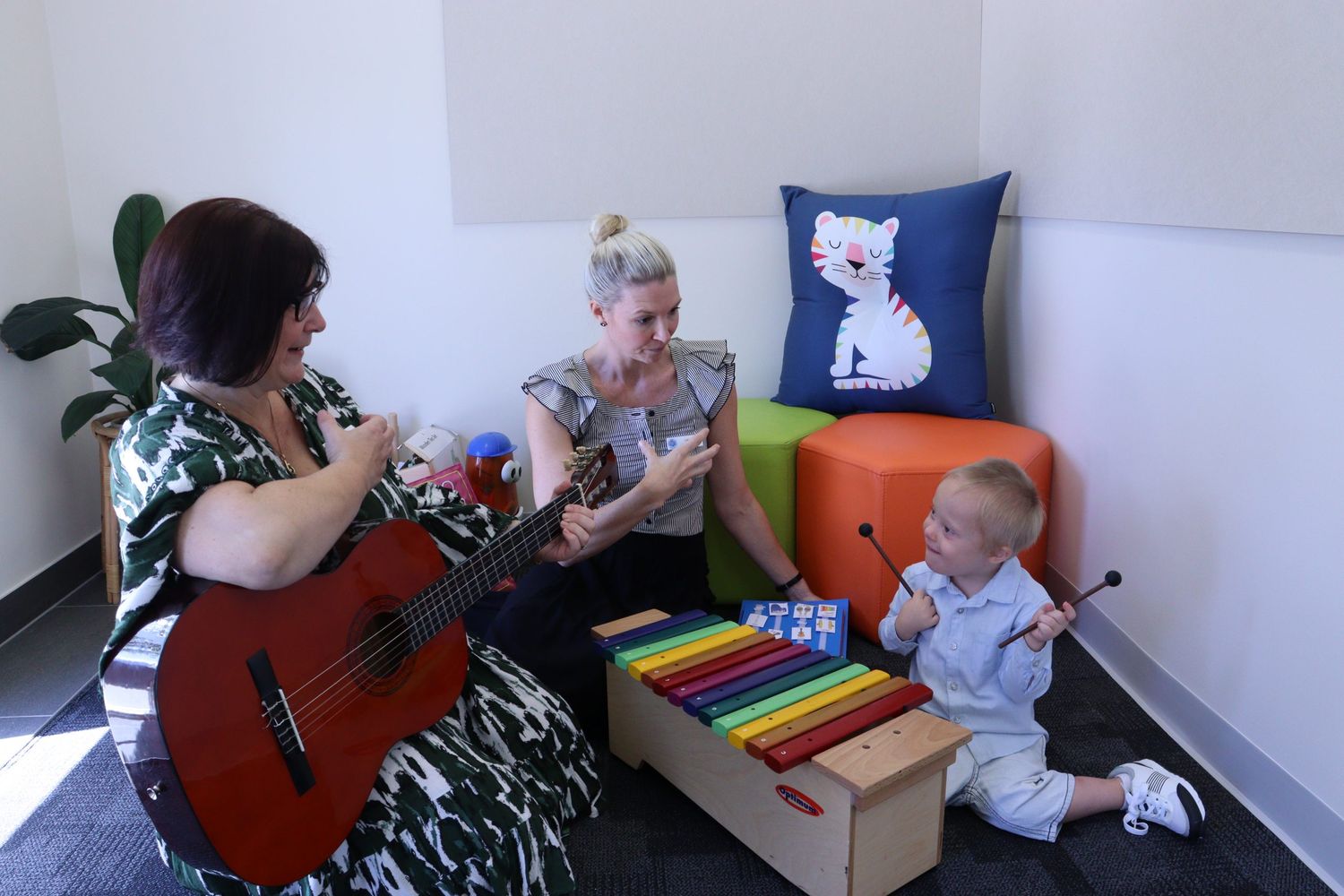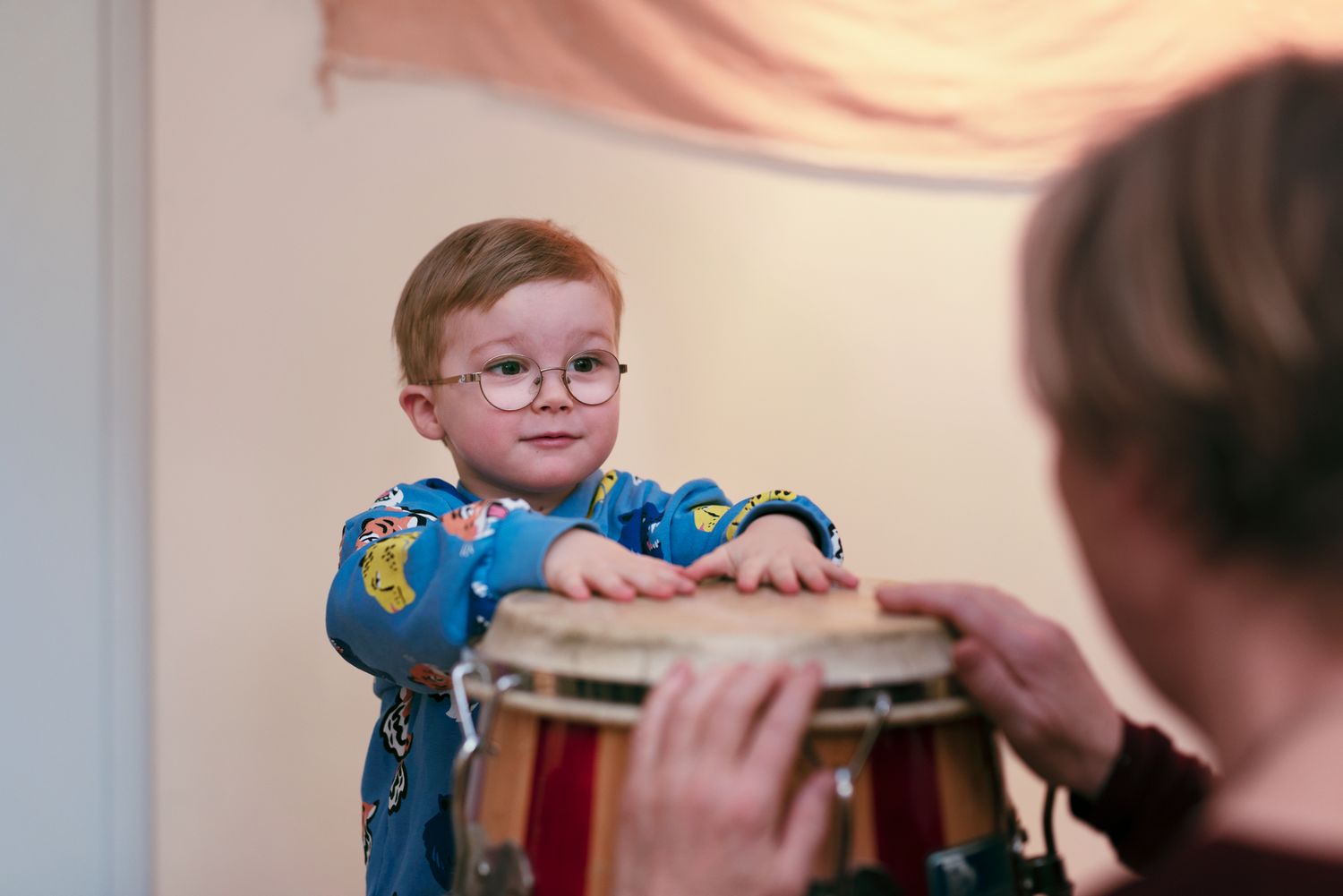Home>Events & Info>Music Therapy>What Universities First Offered Music Therapy


Music Therapy
What Universities First Offered Music Therapy
Published: February 2, 2024
Discover the first universities that offered music therapy programs and explore the history of music therapy. Find out how music therapy has evolved and its impact on individuals.
(Many of the links in this article redirect to a specific reviewed product. Your purchase of these products through affiliate links helps to generate commission for AudioLover.com, at no extra cost. Learn more)
Table of Contents
Introduction
Music therapy is a fascinating field that combines the power of music with therapeutic techniques to improve individuals’ physical, emotional, cognitive, and social well-being. It utilizes the inherent qualities of music, such as rhythm, melody, and harmony, to address various physical and mental health issues.
In recent years, the field of music therapy has gained significant recognition for its effectiveness in treating a wide range of conditions, including stress, anxiety, depression, and even physical pain. As a result, universities around the world have started to offer music therapy programs to meet the growing demand for qualified professionals in this field.
In this article, we will explore the early beginnings of music therapy in universities, the founding institutions that first offered music therapy programs, the pioneers and leaders in the field, the expansion of music therapy programs in universities, and the current state of music therapy programs.
Music therapy is not just about passively listening to music; it involves active engagement and interaction with music under the guidance of a trained music therapist. The therapist uses various music-based interventions, such as playing instruments, singing, composing, and improvising, to achieve specific therapeutic goals. These interventions are tailored to meet the unique needs and preferences of each individual.
Music has a profound impact on our emotions and can serve as a powerful tool for self-expression and communication. It can evoke memories, reduce anxiety, improve mood, and enhance overall well-being. Music therapy harnesses these inherent qualities of music to facilitate positive changes in individuals’ physical, emotional, and mental health.
In the early days, the concept of using music for therapeutic purposes was not widely recognized or understood. However, pioneers in the field recognized the potential of music as a healing modality and began incorporating it into their practices. Over time, the demand for educated and skilled music therapists grew, leading to the establishment of music therapy programs in universities.
This article will delve deeper into the history and evolution of music therapy programs in universities and shed light on the monumental contributions made by early pioneers in the field.
Early Beginnings of Music Therapy in Universities
The roots of music therapy in universities can be traced back to the early 20th century when pioneers began recognizing the therapeutic potential of music. The idea of incorporating music into healthcare settings gained momentum, and soon universities started offering music therapy programs to train professionals in this emerging field.
One of the earliest instances of music therapy being recognized in the academic sphere was at Michigan State University in the United States. In 1944, Willem van de Wall, a pioneer in the field, established a program that focused on training musicians to work with children with disabilities. This program laid the foundation for future music therapy programs and propelled the recognition of music therapy as a legitimate field of study in universities.
Another influential figure in the early history of music therapy is E. Thayer Gaston. In the late 1940s, Gaston established one of the first music therapy programs at the University of Kansas. He emphasized the importance of research and evidence-based practice in music therapy, advocating for its integration into universities as an academic discipline.
As the field of music therapy continued to grow, more universities recognized the value of incorporating music therapy into their curriculum. In the 1970s, the American Music Therapy Association (AMTA) was established, providing a platform for music therapists and promoting the inclusion of music therapy programs in universities.
Since then, universities around the world have embraced the field of music therapy, offering undergraduate and graduate programs that provide comprehensive training in music therapy theory, techniques, and clinical practice. These programs equip students with the knowledge and skills necessary to become professional music therapists.
Music therapy curricula in universities typically include courses in music theory and performance, psychology, neuroscience, research methods, and clinical practice. Students also gain hands-on experience through internships and supervised clinical placements, where they work with diverse populations, including children with developmental disabilities, individuals with mental health conditions, and older adults with age-related cognitive decline.
Today, music therapy programs in universities play a crucial role in training the next generation of music therapists and advancing the field through research and innovation. They offer students a comprehensive understanding of the therapeutic applications of music and prepare them to apply evidence-based practices in various healthcare, educational, and community settings.
The early recognition and establishment of music therapy programs in universities have paved the way for the professionalization of the field and increased accessibility to music therapy services for individuals in need.
Founding Universities that Offered Music Therapy Programs
As the field of music therapy gained recognition, several universities took the initiative to establish pioneering programs in music therapy. These institutions were instrumental in shaping the landscape of music therapy education and practice. Let’s explore some of the founding universities that offered music therapy programs.
Michigan State University (MSU) holds the distinction of being one of the earliest universities to offer a music therapy program. In 1944, Willem van de Wall, the “father of music therapy,” established the music therapy program at MSU. The focus of the program was to train musicians in the application of music therapy techniques for children with disabilities. This program laid a solid foundation for the future development and expansion of music therapy programs across universities.
The University of Kansas is another institution that played a crucial role in the establishment of music therapy programs. In the late 1940s, E. Thayer Gaston, a noted figure in the field, founded one of the first music therapy programs at the University of Kansas. The program emphasized the integration of research and evidence-based practice, setting a standard for future programs.
Temple University in Philadelphia, Pennsylvania, has also made significant contributions to the field of music therapy. In 1941, under the guidance of E. Thayer Gaston, the university established one of the first degree programs in music therapy. Since then, Temple University has continued to be at the forefront of music therapy education, offering undergraduate and graduate programs.
With the growing demand for music therapy education, more universities began to recognize the value of offering dedicated programs in this field. As a result, additional founding universities emerged. These include New York University, which established a music therapy program in the 1960s, and the University of Iowa, which began offering a master’s program in music therapy in 1970.
Over time, the number of universities offering music therapy programs expanded exponentially. Today, numerous universities around the world offer undergraduate, graduate, and doctoral programs in music therapy. These programs provide students with the necessary knowledge and skills to become qualified music therapists, combining a strong foundation in music theory and practice with clinical training and research.
It is worth noting that while these universities were among the founding institutions to offer music therapy programs, many other universities have since joined the movement, reflecting the growing demand for trained music therapists and the widespread recognition of the therapeutic benefits of music.
The establishment of these founding music therapy programs paved the way for the professionalization and growth of the field, ensuring that there are skilled professionals available to meet the needs of individuals seeking music therapy services.
Pioneers and Leaders in the Field
The field of music therapy owes much of its development and growth to the contributions of pioneering individuals who dedicated their lives to advancing the practice and understanding of music therapy. These visionaries played a crucial role in shaping the field and establishing it as a respected discipline. Let’s explore some of the pioneers and leaders in the field of music therapy.
Willem van de Wall is often referred to as the “father of music therapy.” His groundbreaking work at Michigan State University in the 1940s laid the foundation for music therapy as an academic discipline. Van de Wall focused on training musicians to work with children with disabilities and used music as a means to improve their physical, mental, and emotional well-being. His innovative approach and dedication to research paved the way for future developments in the field.
E. Thayer Gaston was another influential figure in the early days of music therapy. He established one of the first music therapy programs at the University of Kansas in the late 1940s and emphasized the importance of research and evidence-based practice. Gaston’s commitment to integrating music therapy into academic settings and his emphasis on rigorous research contributed significantly to the professionalization of the field.
Another prominent pioneer in the field is Clive Robbins, who co-founded the Nordoff-Robbins Music Therapy approach. Along with psychotherapist Paul Nordoff, Robbins revolutionized the field by developing a client-centered and improvisational approach to music therapy. Their innovative techniques focused on individualized musical experiences to foster self-expression, communication, and personal growth. The Nordoff-Robbins approach has influenced music therapy practices worldwide and continues to be widely used today.
Dr. Brian Abrams is recognized for his contributions to music therapy with older adults. He pioneered the development of the Music and Memory program, which uses personalized playlists to enhance the lives of individuals with dementia and memory loss. The program gained international recognition and has had a profound impact on the field, highlighting the therapeutic potential of music for older adults.
Other notable leaders in the field include Dr. Concetta Tomaino, who has conducted groundbreaking research on the use of music therapy for individuals with neurological disorders, and Dr. Deforia Lane, a renowned expert in music therapy for oncology and palliative care. Their research, clinical work, and advocacy efforts have significantly advanced the understanding and acceptance of music therapy in healthcare settings.
These pioneers and leaders, along with many others, have made substantial contributions to the field of music therapy. They have demonstrated the transformative power of music and have paved the way for modern music therapists to continue evolving the field through research, innovation, and collaboration.
It is through their dedication, passion, and tireless efforts that music therapy has gained recognition as a valuable form of therapy and become an integral part of healthcare, education, and community settings.
Expansion of Music Therapy Programs in Universities
Over the years, there has been a significant expansion in the number of universities offering music therapy programs. This growth can be attributed to several factors, including the increasing recognition of music therapy as an effective treatment modality, the demand for trained professionals in the field, and the evolving understanding of the therapeutic benefits of music.
The establishment of music therapy programs in universities started with a handful of pioneering institutions in the mid-20th century. However, as the field gained recognition and research validated its effectiveness, more universities recognized the need to incorporate music therapy into their curriculum.
Today, there are numerous universities around the world offering undergraduate, graduate, and doctoral programs in music therapy. These programs provide students with comprehensive training in both music and therapy, equipping them with the necessary knowledge and skills to become qualified music therapists.
The expansion of music therapy programs has also led to the development of specialized tracks and concentrations within these programs. Students can often choose to focus on specific areas such as mental health, pediatrics, geriatrics, rehabilitation, or community music therapy. This specialization enables students to gain in-depth knowledge and expertise in their chosen area of interest.
Additionally, advancements in technology have played a significant role in the expansion of music therapy programs. Online and hybrid programs have emerged, providing greater accessibility to individuals who may not have the resources or flexibility to attend traditional on-campus programs. These distance learning options have allowed students to pursue music therapy education from anywhere in the world.
The expansion of music therapy programs has not only increased the availability of trained professionals but has also contributed to the growth and professionalization of the field. Through rigorous academic training, supervised clinical experiences, and research opportunities, universities are preparing students to meet the evolving needs and challenges of the field.
With the expansion of music therapy programs, universities are also fostering collaboration and knowledge-sharing with other disciplines. Interdisciplinary programs and research partnerships have emerged, creating opportunities for music therapists to work alongside professionals in fields such as psychology, neuroscience, medicine, and education. This collaboration enhances the integration of music therapy into various healthcare, educational, and community settings.
The expansion of music therapy programs in universities has not only been limited to traditional degree programs. Continuing education courses, certificates, and workshops are also being offered to professionals who want to enhance their skills or specialize in specific areas of music therapy practice.
Overall, the expansion of music therapy programs in universities has played a pivotal role in raising the standards of practice, increasing the accessibility of music therapy services, and advancing research in the field. It has paved the way for a new generation of qualified music therapists who are equipped to meet the diverse needs of individuals seeking music therapy interventions.
Current State of Music Therapy Programs in Universities
Music therapy programs in universities are thriving in the present day, reflecting the growing recognition and demand for music therapy services. These programs have evolved to incorporate evidence-based practices, research initiatives, community outreach, and interdisciplinary collaboration, ensuring that students receive a comprehensive education in the field.
Universities now offer a range of music therapy programs, including undergraduate, graduate, and doctoral degrees. These programs typically combine coursework in music theory, psychology, anatomy and physiology, research methods, and clinical practice. Students gain hands-on experience through internships, practicums, and supervised clinical placements, where they work with diverse populations under the guidance of experienced music therapists.
Furthermore, many universities have established clinics or centers within their music therapy programs. These facilities not only serve as training grounds for students but also provide valuable services to the community. The clinics offer music therapy sessions to individuals of all ages dealing with various physical, emotional, and cognitive challenges, allowing students to apply their knowledge and skills in real-world settings.
As the field grows, universities have incorporated research into their music therapy programs. Students are encouraged to engage in research projects, exploring topics such as the effects of music interventions on mental health, the use of music therapy in pain management, and the impact of music on cognitive function. This emphasis on research helps advance the field and contributes to the evidence base supporting the effectiveness of music therapy.
Collaboration between music therapy programs and other disciplines is also becoming increasingly prevalent. Universities are recognizing the benefits of interdisciplinary education and research, fostering partnerships with psychology departments, medical schools, and rehabilitation centers. These collaborations promote a holistic approach to healthcare, education, and community well-being, with music therapy playing a vital role in the integration of various therapeutic modalities.
Technology is also playing a significant role in the current state of music therapy programs. Many universities utilize state-of-the-art equipment and software to enhance the learning experience. Students have access to music production studios, virtual reality technology, and electronic music instruments, allowing them to explore innovative techniques and adapt to the evolving needs of the field.
In terms of professional development, universities often provide opportunities for students to join professional organizations such as the American Music Therapy Association (AMTA) or international equivalents. These organizations offer resources, networking opportunities, and continuing education options, ensuring that graduates remain connected to the larger music therapy community and stay informed about advancements in the field.
Overall, the current state of music therapy programs in universities reflects a strong commitment to education, research, clinical practice, and interdisciplinary collaboration. These programs are producing skilled and knowledgeable music therapists who are making a positive impact on the lives of individuals across a wide range of settings, including hospitals, schools, mental health centers, and rehabilitation facilities.
Conclusion
The growth and development of music therapy programs in universities have been instrumental in advancing the field and expanding access to music therapy services. Starting with a few pioneering institutions, music therapy has now become a respected academic discipline with numerous universities offering comprehensive programs.
The early pioneers and leaders in the field laid the foundation for music therapy programs, emphasizing research, evidence-based practice, and interdisciplinary collaboration. Their efforts set the stage for universities to recognize the value of music therapy and incorporate it into their curriculum.
Today, music therapy programs in universities provide students with a solid foundation in music theory and practice, as well as training in therapeutic techniques and clinical practice. These programs also foster research initiatives, community engagement, and collaborations with other disciplines, ensuring a well-rounded education that prepares students for the diverse needs and challenges of the field.
The current state of music therapy programs reflects the ongoing commitment to professional growth and development. Universities are equipping students with the necessary skills, knowledge, and experience to become qualified music therapists who make a positive impact on individuals’ lives.
The incorporation of technology, interdisciplinary collaboration, and research into music therapy programs ensures that the field continues to evolve and adapt to the changing healthcare and educational landscape. It also promotes a holistic approach to well-being, recognizing the importance of music in promoting physical, emotional, cognitive, and social health.
The expansion of music therapy programs has increased the availability of trained professionals, improving access to music therapy services for individuals of all ages and with various needs. Through clinical placements, community outreach, and research projects, students gain practical experience and contribute to the growing evidence base supporting the effectiveness of music therapy interventions.
In conclusion, music therapy programs in universities play a vital role in training the next generation of music therapists and advancing the field as a whole. The recognition and incorporation of music therapy in academic settings have not only elevated the status of the profession but also improved the quality of care and support available to individuals seeking music therapy services.











